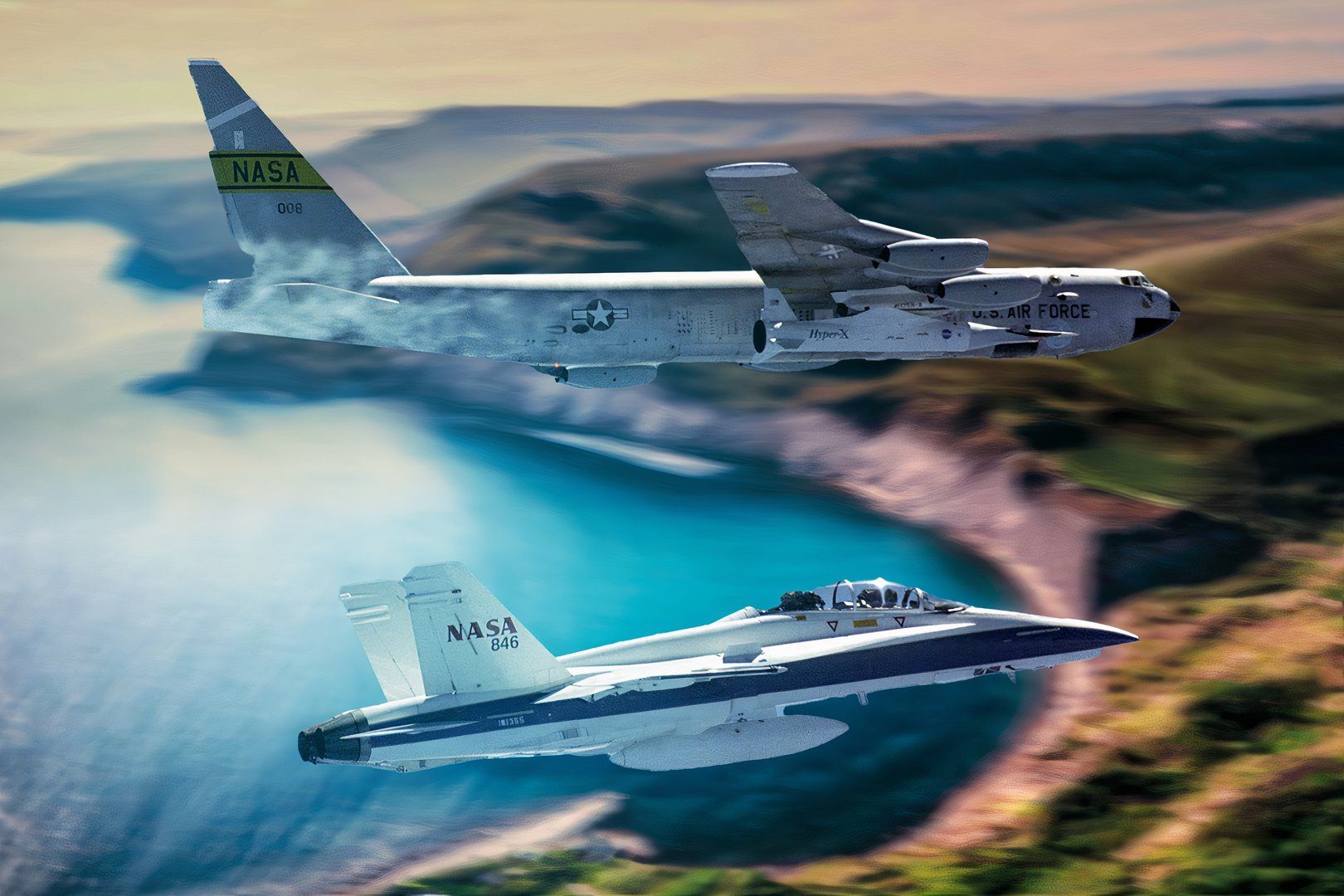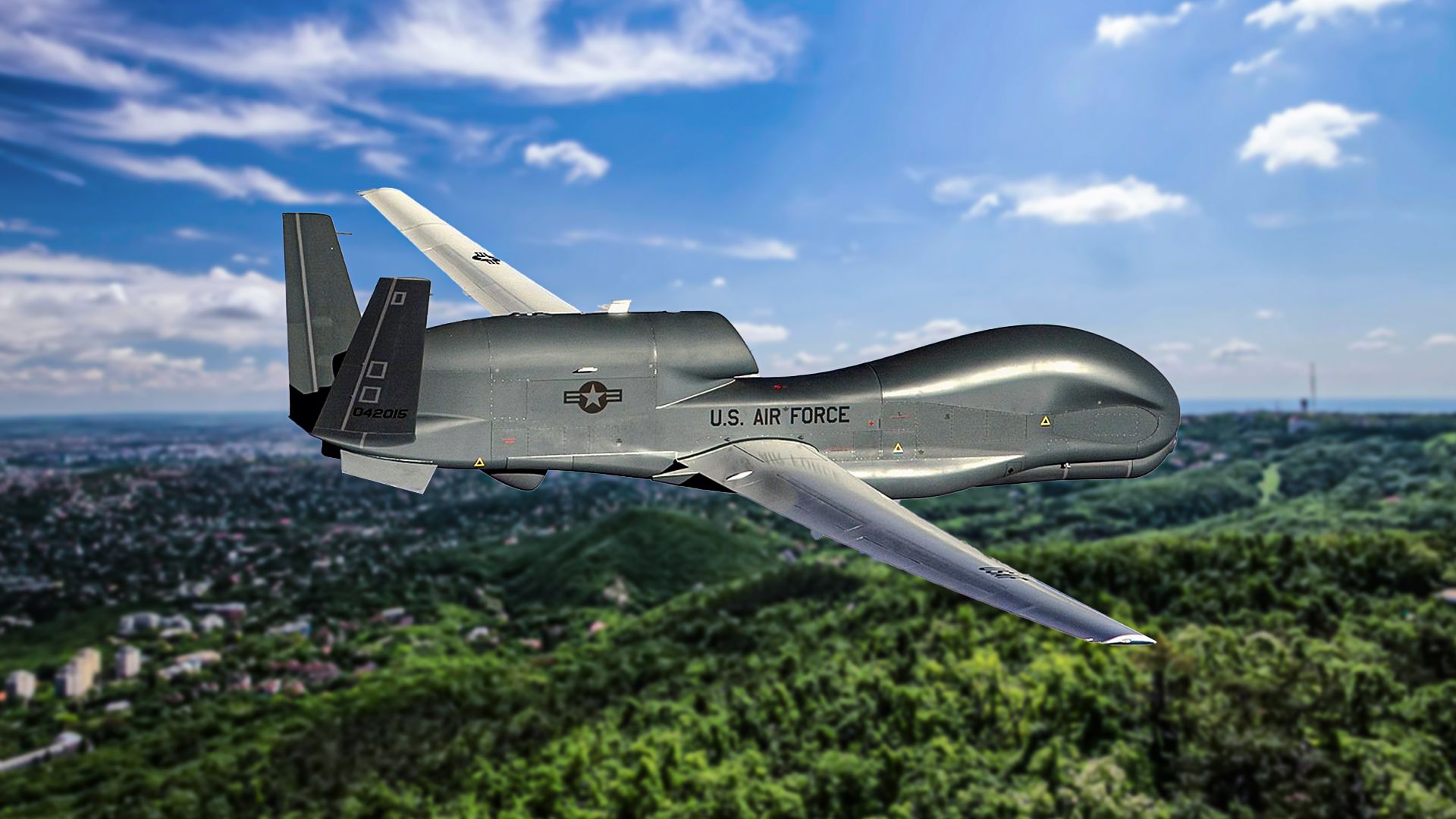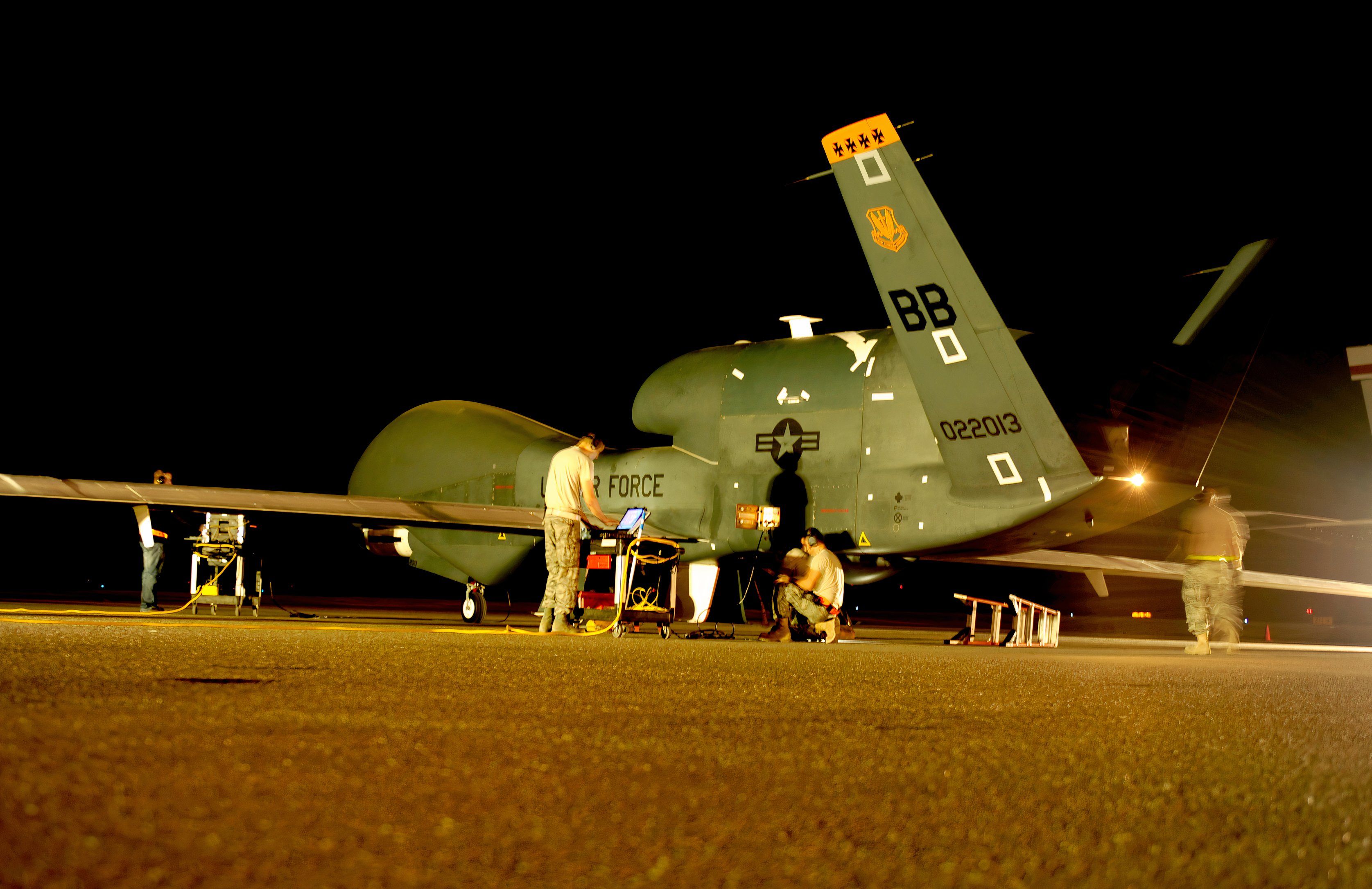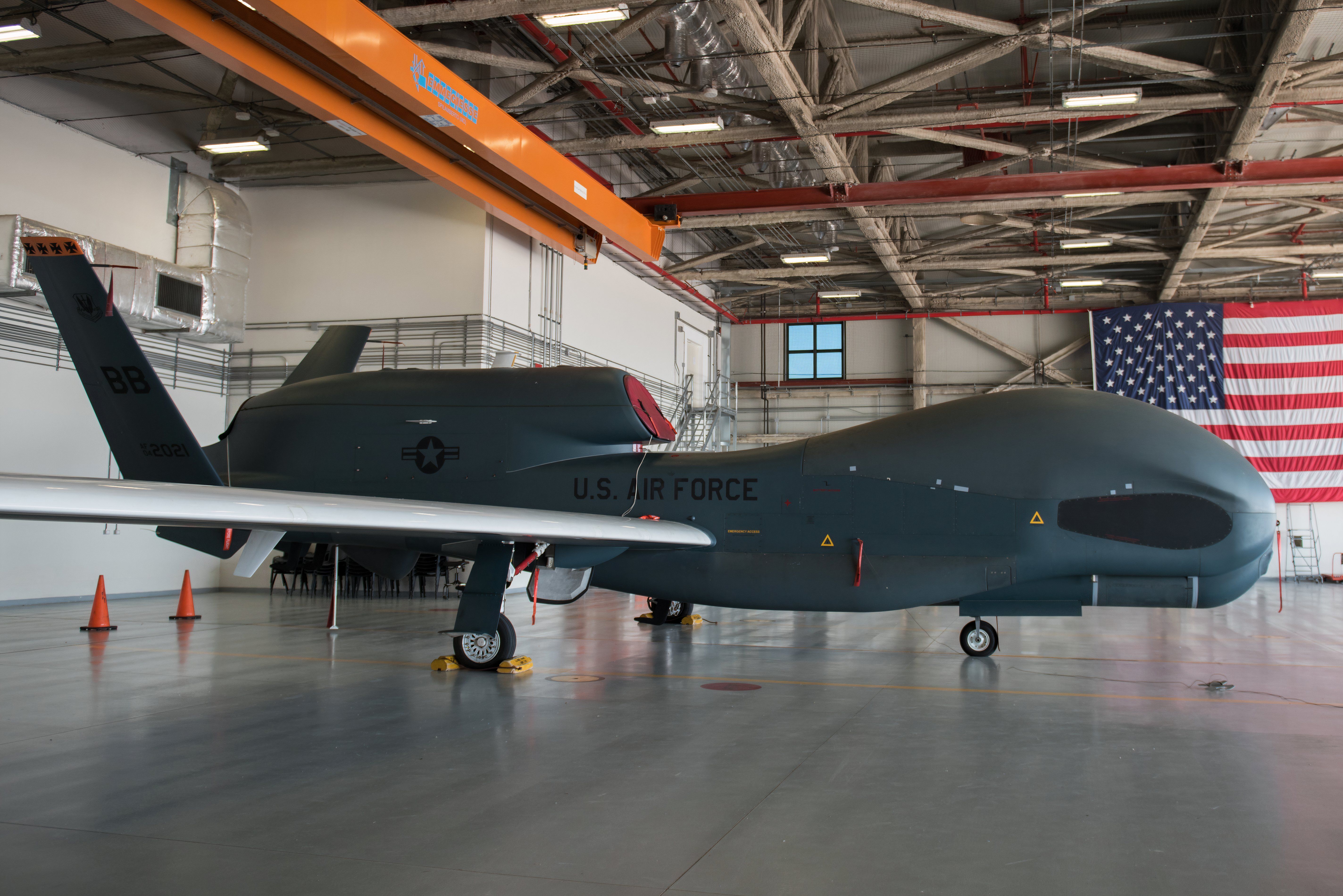Summary
- The Global Hawk is a high-altitude drone used for surveillance and reconnaissance.
- Different blocks of the aircraft have varying capabilities and equipment.
- The US military plans to retire the Global Hawk in 2027, replacing it with the RQ-180.
The idea of eliminating the human element in war has existed for decades, but it was successfully implemented with the advent of Unmanned Aircraft Systems (UAS). One of the most famous models is also one of the best: the Northrop Grumman RQ-4 Global Hawk.
What are the Global Hawk’s capabilities?
The Global Hawk is used as a high-altitude long-endurance (HALE) platform and can stay airborne at high altitudes for over 30 hours. During this time, the aircraft uses imagery intelligence (IMINT), signals intelligence (SIGINT), and moving target indicator (MTI) sensors to capture high-resolution images of the battlefield and land in all types of conditions.
The Global Hawk’s capabilities change significantly depending on the block in which it was produced. The aircraft were produced in three blocks designated 10, 20, and 30.
Photo: USAF
Block 10 aircraft were the initial models and were retired from service in 2011. Only nine were produced as the aircraft underwent design changes to increase its capabilities. The last Block 10, also known as the RQ-4A, was delivered in June 2006.
The second iteration of the aircraft was known as the Block 20. The airframe of these aircraft was changed, with the nose section changing shape and the wings increasing in length to create more lift and allow the aircraft to stay airborne for longer periods. The Block 20 could also carry up to 3,000 lbs (1,360 kg) of internal payload. From the factory, these aircraft were only equipped with IMINT-only capabilities.
Block 30 aircraft were produced next and were equipped to serve as a multi-intelligence platform. According to the United States Air Force (USAF), the Block 30 Global Hawks carry electro-optical, infrared, synthetic aperture radar (SAR), and high—and low-band SIGINT sensors.
Finally, we have the Block 40. These are equipped with Radar Technology Insertion Program (RTIP), which is an active electronically scanned array radar that provides MTI and SAR data. The RQ-4 Block 40 set an endurance record for the longest unrefueled flight by a USAF aircraft in 2014 after flying for 34.3 hours.
How do they work?
The Global Hawk operates using two distinct elements: a Launch and Recovery Element (LRE) and a Mission Control Element (MCE). The pilots communicate with the aircraft through a secure military communication satellite transmitting encrypted data over the X-Band and datalink.
Photo: USAF
The LRE is located at the aircraft base and is used to launch and recover the aircraft. When flying to and from the mission area, the aircraft is primarily controlled by the LRE pilot. Once the aircraft reaches the designated area, the controls are switched to the MCE.
The MCE controls the aircraft for the majority of its ISR mission. The aircraft is now operated by a crew of two: a pilot and a sensor operator. The control and display interface allows the pilot to alter the navigational track of the aircraft and monitor its status and health.
The sensor operator manages the sensors aboard the aircraft, from calibration to data collection. They also assist with tasks like target deck prioritization and image quality control.
History
About the Global Hawk
The Global Hawk was initially designed by Ryan Aeronautical, which Northrop Grumman bought in 1999. It is a high-altitude, long-endurance, remotely piloted aircraft with an integrated that uses a wide array of sensors to provide intelligence, surveillance, and reconnaissance (ISR) capability. It can give a constant near-real-time feed.
The Global Hawk fleet has been in operation since 2001. It has amassed over 320,000 flight hours and flown missions in Iraq and Afghanistan. It is especially favored because it is affordable and offers flexibility for various missions. These UAS are primarily operated by the 12th Reconnaissance Squadron at Beale Air Force Base, California, and the 348th Reconnaissance Squadron at Grand Forks AFB, North Dakota.
The US military initially wanted 63 units of the aircraft. However, skyrocketing development costs led to only 45 being produced. The aircraft has been in operation for 23 years, since 2001. The USAF plans to retire the type in 2027. The highly classified Northrop Grumman RQ-180 will replace it.
According to the Air Force, the specifications of the Global Hawk are as follows:
| Specifications | |
| Crew | 3 (LRE pilot, MRE pilot, sensor operator) |
| Capacity | 3,000 lbs (1,360 kg) |
| Length | 47 ft 7 in (14.5 m) |
| Wingspan | 130.9 ft (39.9 m) |
| Height | 15.3 ft (4.7 m) |
| Empty weight | 14,950 lb (6,781 kg) |
| Gross weight | 32,250 lb (14,628 kg) |
| Maximum speed | 340 kts (391 mph; 629 km/h) |
| Cruise speed | 310 kts (357 mph; 570 km/h) |
| Range | 12,300 NM (14,200 mi; 22,800 km) |
| Endurance | 30+ hours |
| Service ceiling | 60,000 ft (18,000 m) |
| Engine | Rolls-Royce F137-RR-100 turbofan engine |
| Thrust | 7,600 lbf (34 kN) |
Life after retirement
Once retired, the Global Hawks won’t fade into history; the US military has plans for the versatile UAS. According to Defense News, Northrop Grumman is adapting two Global Hawks into Range Hawks.
The aircraft are part of the Sky Range program, which aims to use unmanned aircraft to track hypersonic systems during flight tests. Another 22 Global Hawks are part of the project. The aircraft will be used at the Test Resource Management Center’s (TRMC) High-Speed System Test Department. The modifications are ongoing at the Grand Sky facility near Grand Forks, North Dakota.

Related
5 Amazing Military Planes Flown By NASA
NASA finds uses for a range of ex-military aircraft – often extensively modified for scientific mission purposes.



